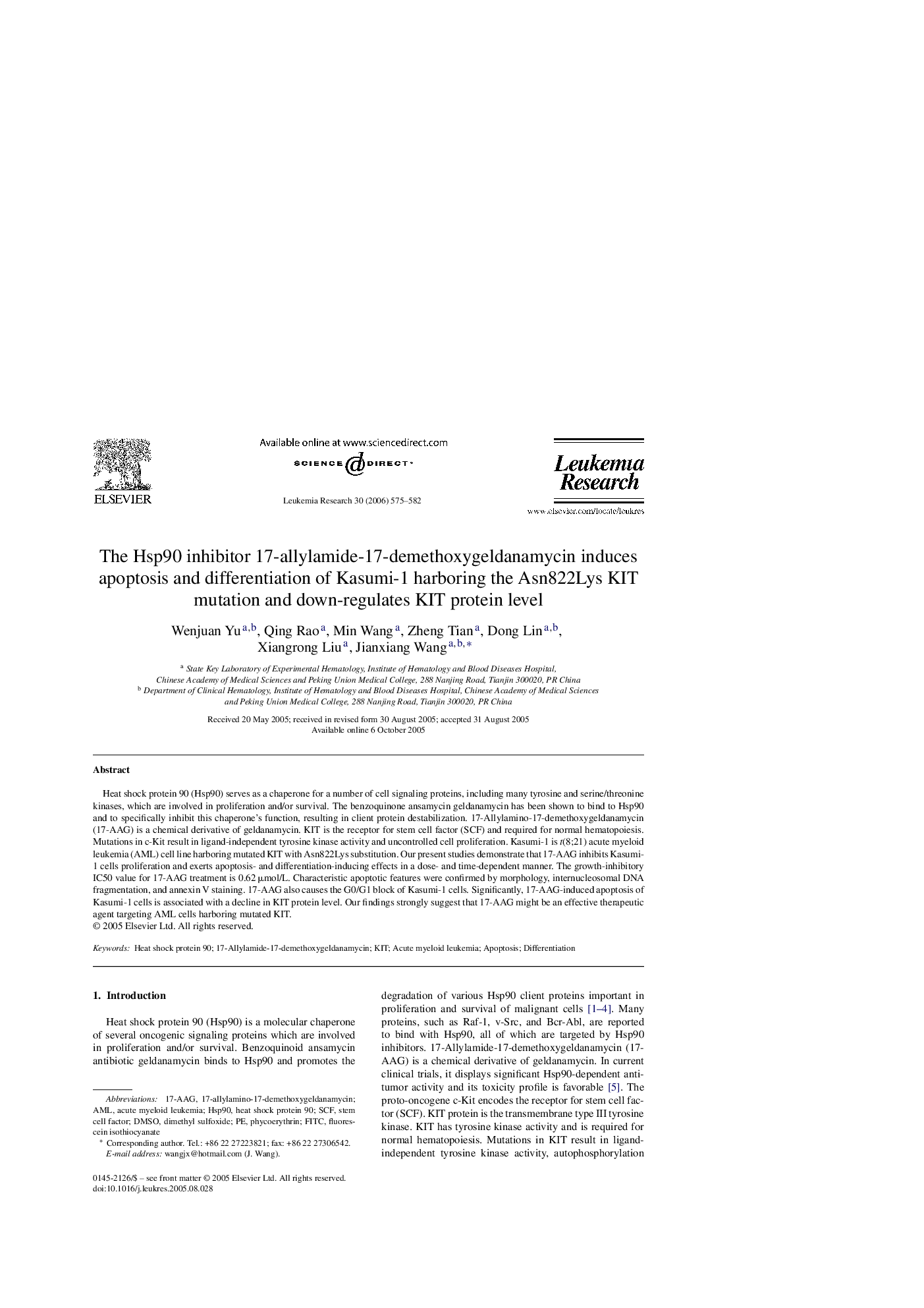| Article ID | Journal | Published Year | Pages | File Type |
|---|---|---|---|---|
| 2140067 | Leukemia Research | 2006 | 8 Pages |
Heat shock protein 90 (Hsp90) serves as a chaperone for a number of cell signaling proteins, including many tyrosine and serine/threonine kinases, which are involved in proliferation and/or survival. The benzoquinone ansamycin geldanamycin has been shown to bind to Hsp90 and to specifically inhibit this chaperone's function, resulting in client protein destabilization. 17-Allylamino-17-demethoxygeldanamycin (17-AAG) is a chemical derivative of geldanamycin. KIT is the receptor for stem cell factor (SCF) and required for normal hematopoiesis. Mutations in c-Kit result in ligand-independent tyrosine kinase activity and uncontrolled cell proliferation. Kasumi-1 is t(8;21) acute myeloid leukemia (AML) cell line harboring mutated KIT with Asn822Lys substitution. Our present studies demonstrate that 17-AAG inhibits Kasumi-1 cells proliferation and exerts apoptosis- and differentiation-inducing effects in a dose- and time-dependent manner. The growth-inhibitory IC50 value for 17-AAG treatment is 0.62 μmol/L. Characteristic apoptotic features were confirmed by morphology, internucleosomal DNA fragmentation, and annexin V staining. 17-AAG also causes the G0/G1 block of Kasumi-1 cells. Significantly, 17-AAG-induced apoptosis of Kasumi-1 cells is associated with a decline in KIT protein level. Our findings strongly suggest that 17-AAG might be an effective therapeutic agent targeting AML cells harboring mutated KIT.
